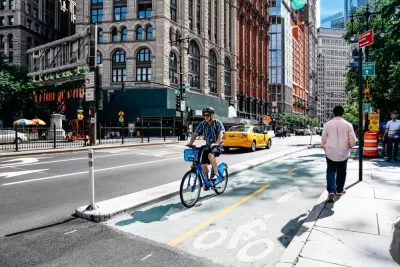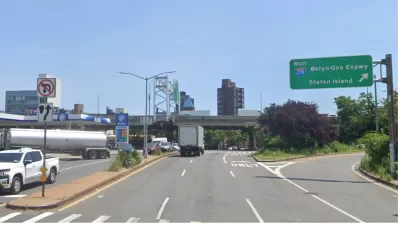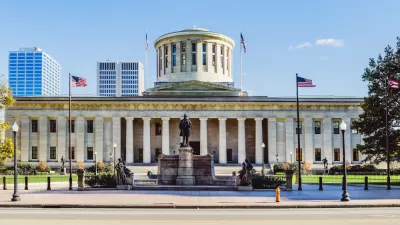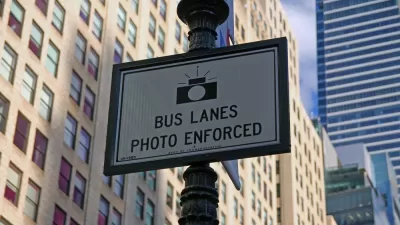A proposed state bill would permit New York City’s transportation department to install up to 50 cameras that would monitor bike lane violations, with drivers that block bike lanes facing a $50 fine.

“Drivers entering bike lanes are breaking the law, even if they have their blinkers on while dashing into a store to drop off a package or grab a coffee. But they’re unlikely to be cited by police, both because the infraction is usually brief and because officers seldom prioritize bike lane enforcement.” Even worse, police cars can often be seen blocking bike lanes themselves.
Reporting for Bloomberg CityLab, David Zipper describes a New York state bill that seeks to address this issue by deploying cameras that record bike lane violations. “The bill would give the city’s transportation department the green light to install up to 50 such bike lane cameras, with violators mailed $50 fines.”
Unlike a similar law passed in June that allows English towns to use bike lane cameras (London has announced it will install camera-based bike lane enforcement), the New York bill doesn’t apply to painted bike lanes that are not already semi-protected by flexible delineators or other physical infrastructure.
Of course, this effort still falls short of fully protecting people on bikes. “The obvious way to protect bike lanes is, literally, to protect them — with hard infrastructure that physically prevents motor vehicles from invading cyclists’ space.” As Zipper notes, “Research shows that protected lanes offer a powerful way to boost street safety — and that fear of a collision (especially among women) may be the single greatest obstacle preventing more people from using a uniquely healthy, climate-friendly, and space-efficient means of transport.”
FULL STORY: A New Tool in the Battle to Keep the Bike Lane Clear

Manufactured Crisis: Losing the Nation’s Largest Source of Unsubsidized Affordable Housing
Manufactured housing communities have long been an affordable housing option for millions of people living in the U.S., but that affordability is disappearing rapidly. How did we get here?

Americans May Be Stuck — But Why?
Americans are moving a lot less than they once did, and that is a problem. While Yoni Applebaum, in his highly-publicized article Stuck, gets the reasons badly wrong, it's still important to ask: why are we moving so much less than before?

Research Shows More Roads = More Driving
A national study shows, once again, that increasing road supply induces additional vehicle travel, particularly over the long run.

Judge Halts Enforcement of Anti-Homeless Laws in Grants Pass
The Oregon city will be barred from enforcing two ordinances that prosecute unhoused residents until it increases capacity and accessibility at designated camping sites.

Advancing Sustainability in Los Angeles County Schools
The Los Angeles County Office of Education’s Green Schools Symposium brings together educators, students, and experts to advance sustainability in schools through innovative design, climate resilience strategies, and collaborative learning.

Using Old Oil and Gas Wells for Green Energy Storage
Penn State researchers have found that repurposing abandoned oil and gas wells for geothermal-assisted compressed-air energy storage can boost efficiency, reduce environmental risks, and support clean energy and job transitions.
Urban Design for Planners 1: Software Tools
This six-course series explores essential urban design concepts using open source software and equips planners with the tools they need to participate fully in the urban design process.
Planning for Universal Design
Learn the tools for implementing Universal Design in planning regulations.
City of Moreno Valley
Institute for Housing and Urban Development Studies (IHS)
City of Grandview
Harvard GSD Executive Education
NYU Wagner Graduate School of Public Service
City of Cambridge, Maryland
Newport County Development Council: Connect Greater Newport





























